How to cook sticky rice at home.
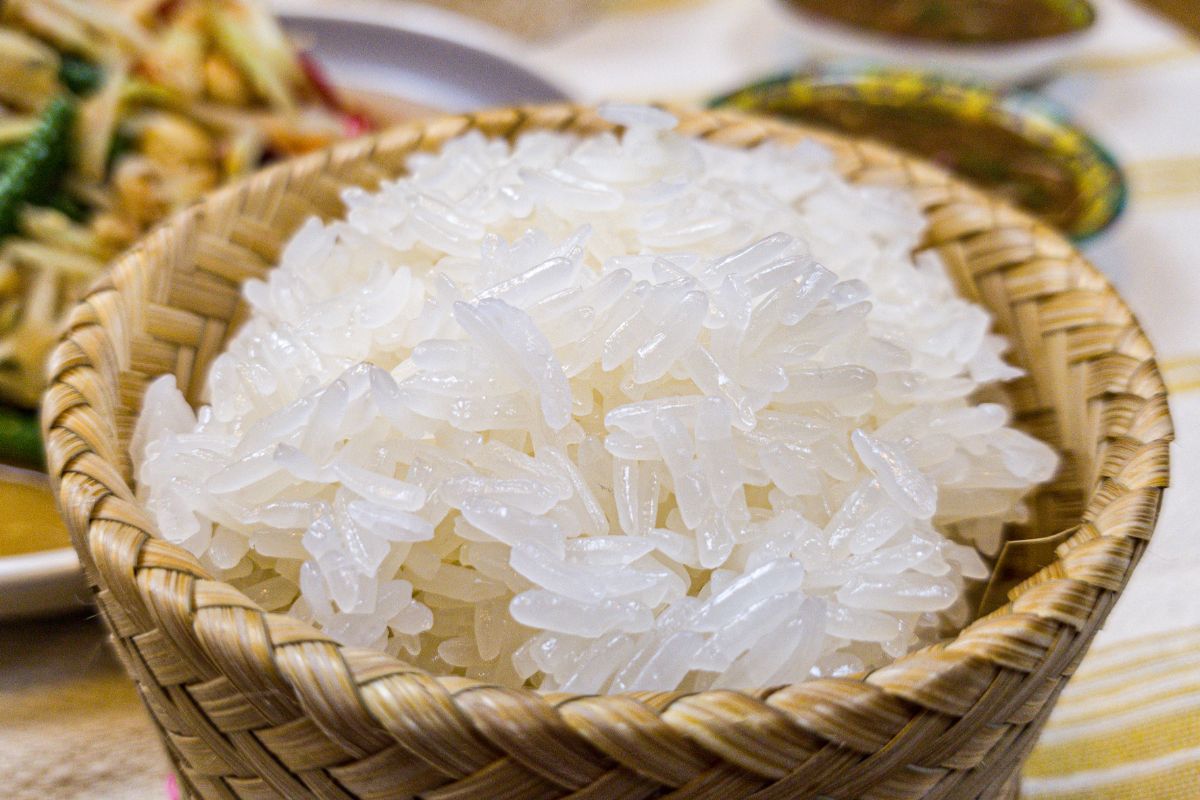
A lot of people I know have trouble cooking sticky rice at home. Can I use any type of rice? How do I cook it? Do I need special equipment? These are all great questions. Here is my method, which is simple and yields solid results.
Choosing the right rice.
To make proper sticky rice you need to have the right rice. The problem is that it is often difficult to find and may be packaged using a few different names. I typically see it labeled glutinous rice or sweet rice. This is not to be confused with Japanese glutinous or sweet rice, which is used for mochi. Your best bet is to buy sweet or glutinous rice that is grown in Thailand. If you attempt this method with the wrong rice, you will most likely be disappointed.
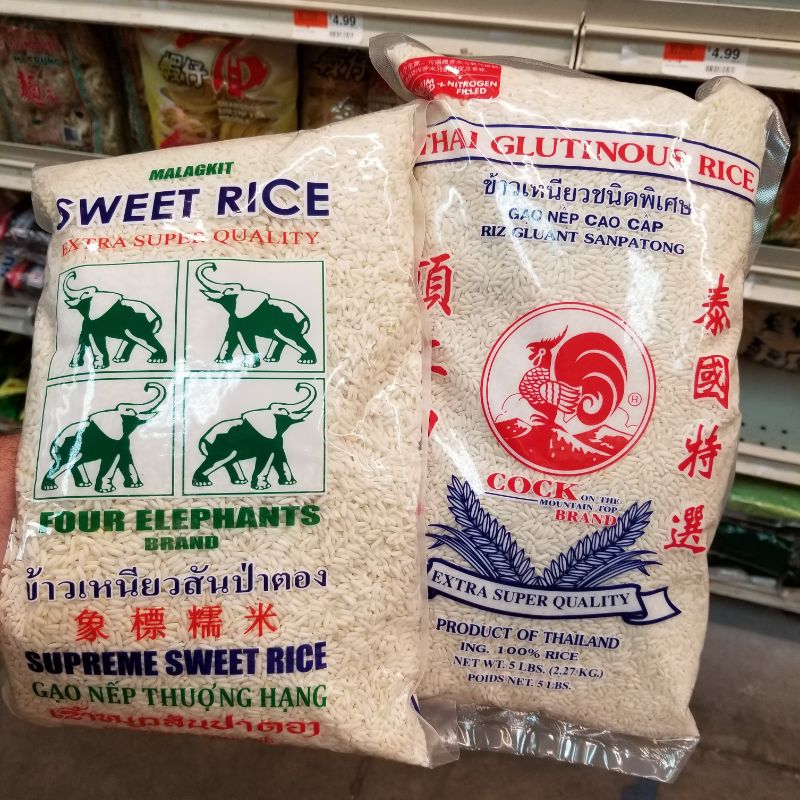
The steamer
In many parts of Southeast Asia, sticky rice is traditionally cooked in a special open-topped bamboo basket. The rice is washed, soaked and cooked over a pot of boiling water. Most people I know don’t have the space in their kitchens for a dedicated sticky rice steamer so I will show you how to steam the rice in a conventional stack-able steamer.
Because this particular steamer has relatively small holes in the steamer tray, I cook the rice directly on the tray. The holes are small enough that very little rice will fall into the simmering water below. If the holes on your steamer are any bigger, simply line the bottom of the steamer tray with a piece of cheesecloth before adding the rice.
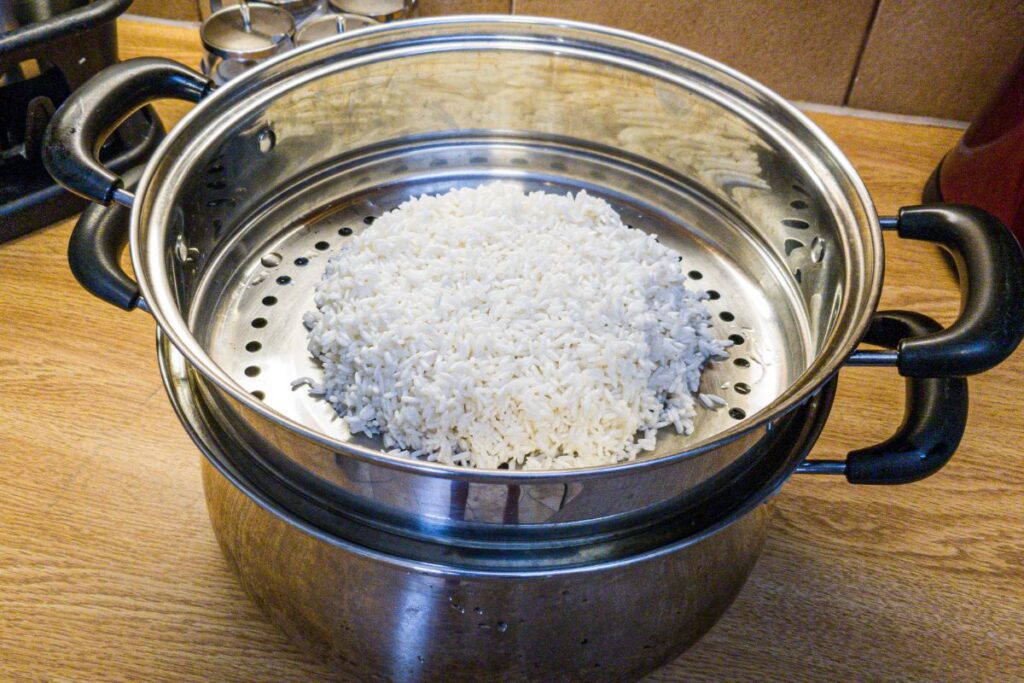
Notes on the method
The nice thing about sticky rice is that as long as you have the right rice and you follow some basic guidelines, it is very easy to make and is more forgiving than a traditional pot of boiled/steamed rice. The very act of steaming the rice takes away the stress of using too much or too little water, potentially ruining your rice.
In a traditional pot of rice, you shouldn’t open the pot and check on the rice. Doing so allows your precious, pre-measured water to escape the pot in the form of steam. Sticky rice, on the other hand, can be uncovered multiple times as long as the water stays boiling.
This rice is also much more forgiving in terms of the cooking time. Five or ten additional minutes in the steamer will not ruin your rice.
Wash and soak the rice
Measure out how much rice you want to cook. I suggest between 1/2 to 2/3 cup of dry rice per person.
Sticky rice needs to be washed and soaked before cooking. Washing helps to remove excess starch on the outside of the grains of rice. If you don’t wash off this excess starch, the exterior of the rice could get gummy and overly sticky. Remember, sticky rice is eaten with your hands. If your sticky rice is gummy and wet, it can leave your fingers feeling sticky and gross. Great sticky rice will stick to itself, not your fingers.
To wash the rice, place the rice into a mixing bowl and cover it with an inch or two of cool water. Use your fingertips to vigorously agitate the rice for 10 seconds or so. You will notice the water begin to get cloudy. Tip the bowl over into a sink so that most of the cloudy water is drained away but the rice remains in the bowl. Fill the bowl up with water again and repeat this process until the water is relatively clear, usually about 3 or 4 times.
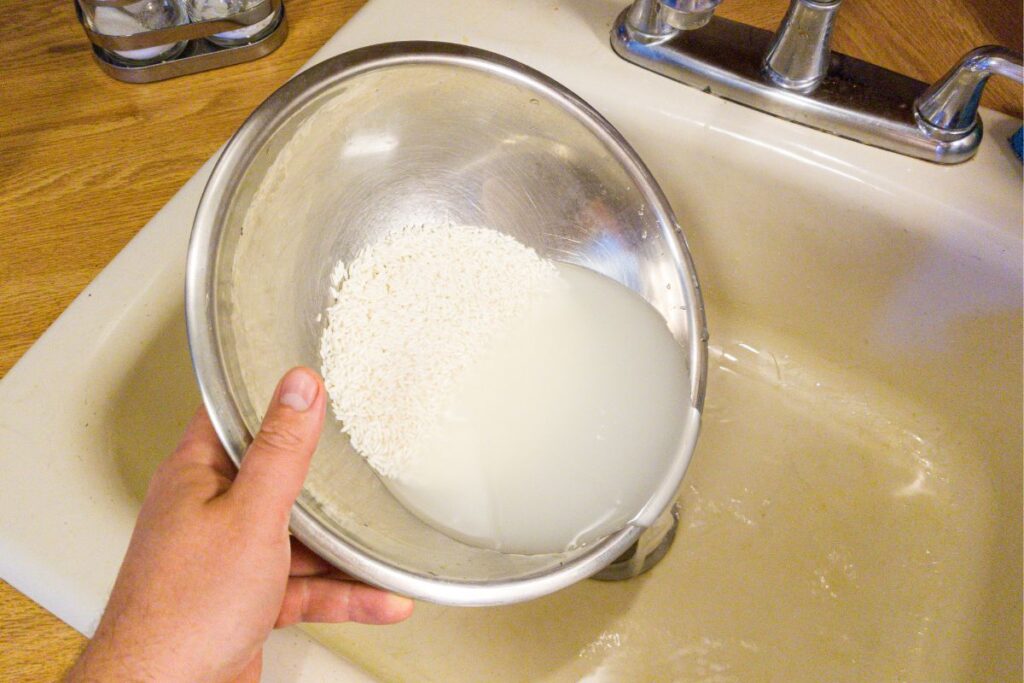
After washing, cover the rice with a few inches of cool water and allow the rice to sit at room temperature to soak for anywhere between 4 and 24 hours. Soaking is essential for hydrating the grains of rice and making sure they cook properly. Don’t soak your rice for more than 24 hours as it can start to ferment and go sour.
Cook the rice
When you are ready to cook the rice, Fill the bottom of your steamer with about 1 or 2 inches of water. Bring to a boil. Make sure you have enough water to avoid evaporation, but not so much that the boiling water is splashing up onto the rice.
Drain the rice very well and place onto a dry steamer tray. If the bottom layer of rice is sitting in water, this layer will tend to get gummy and overcooked. This is also why we try not to overfill the bottom compartment with water, it tends to splash up and wet the rice. Try to keep the rice in a roughly 1 to 2 inch tall layer that is of a relatively even height throughout. This ensures that the rice cooks evenly. Do not overfill each steamer tray. Whenever I have to cook a lot of rice, I use an additional tray and cook two trays at once.
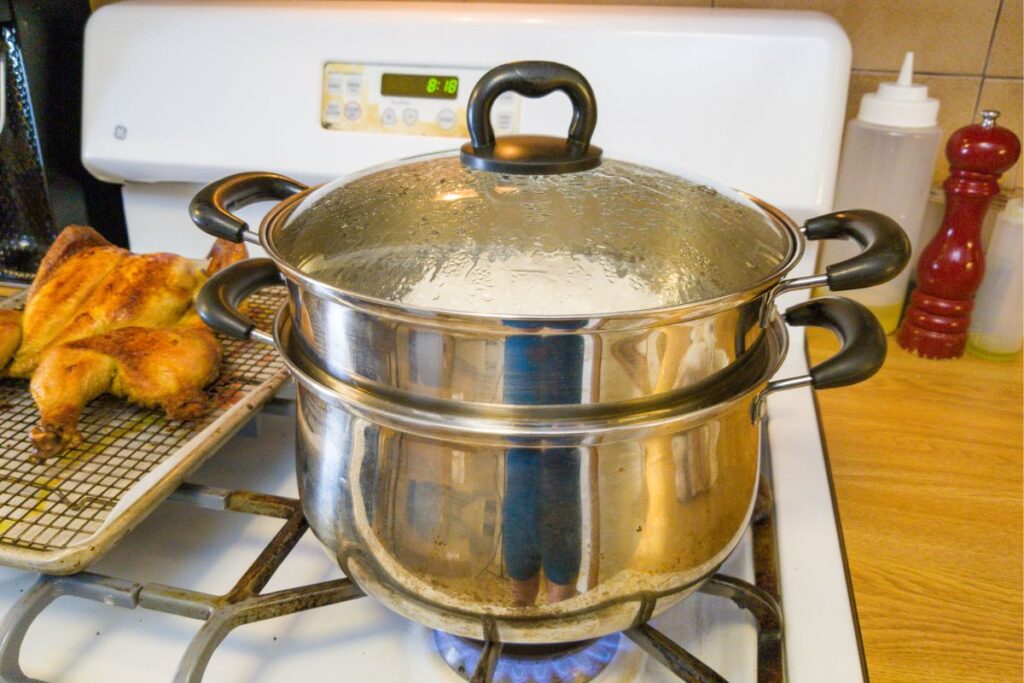
Place the tray on the steamer and cover with a lid. Allow the rice to cook for about 15 minutes. The steamer should be producing a good bit of steam while cooking without being overly aggressive. After 15 minutes, carefully open the lid and use a fork to taste a bit of rice from the very center. If it is still crunchy or too toothsome, allow to cook longer, checking every 5 minutes until finished.
Turn off the heat, open up the steamer and let the excess steam escape. Give the rice a gentle fluff and put into serving containers of your choice.
Goes well with…
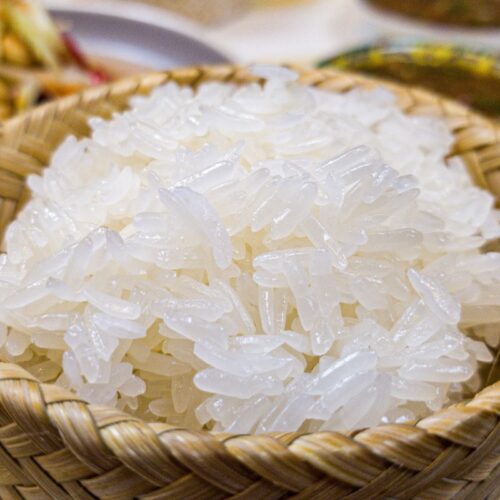
Sticky Rice
Ingredients
- 1.5 cups sticky rice make sure you have the right rice!
Instructions
- Wash the rice in 3 changes of cool water
- Cover rice with 2 or 3 inches of cool water and soak at room temperature anywhere between 4-24 hours
- Fill the bottom of a steamer with a few inches of water and bring to a boil.
- Place rice onto a steamer tray in an even layer and steam for 15 minutes.
- Taste the rice to see if it is cooked. If it needs more time, continue steaming, checking every 5 minutes.
- Gently fluff the rice and serve.